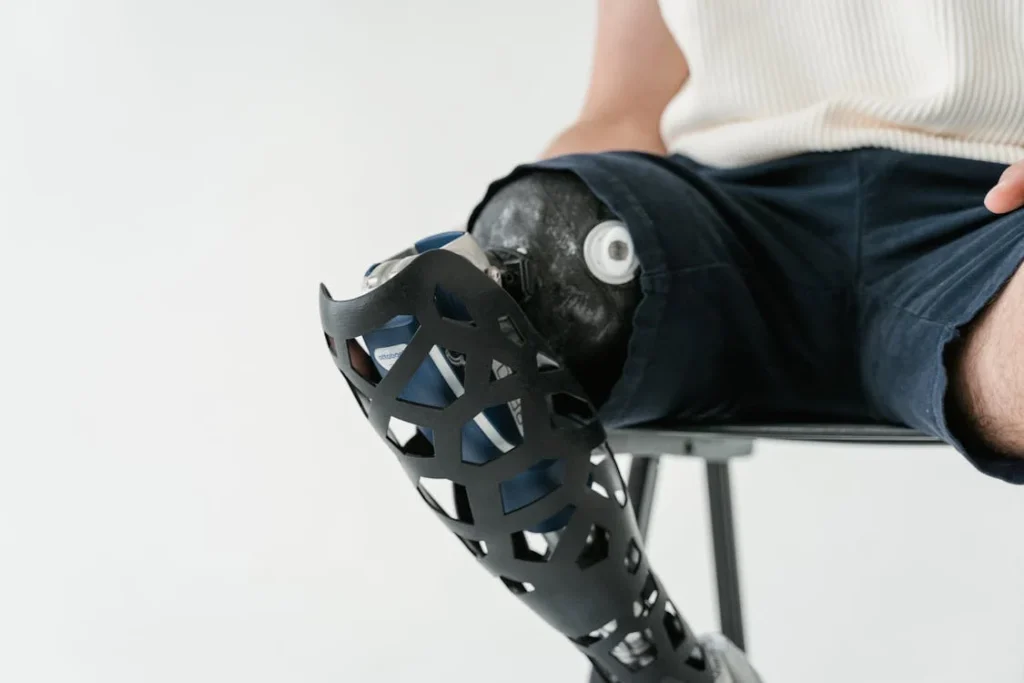When someone loses a limb, the first few weeks can be filled with many emotions and questions. One of the most important decisions they’ll face early on is whether to get fitted for a prosthetic right away or wait for some time. This choice is known as early fit vs. delayed fit prosthetics. It may seem like a simple decision, but it can have lasting effects on how well a person recovers, both physically and emotionally.
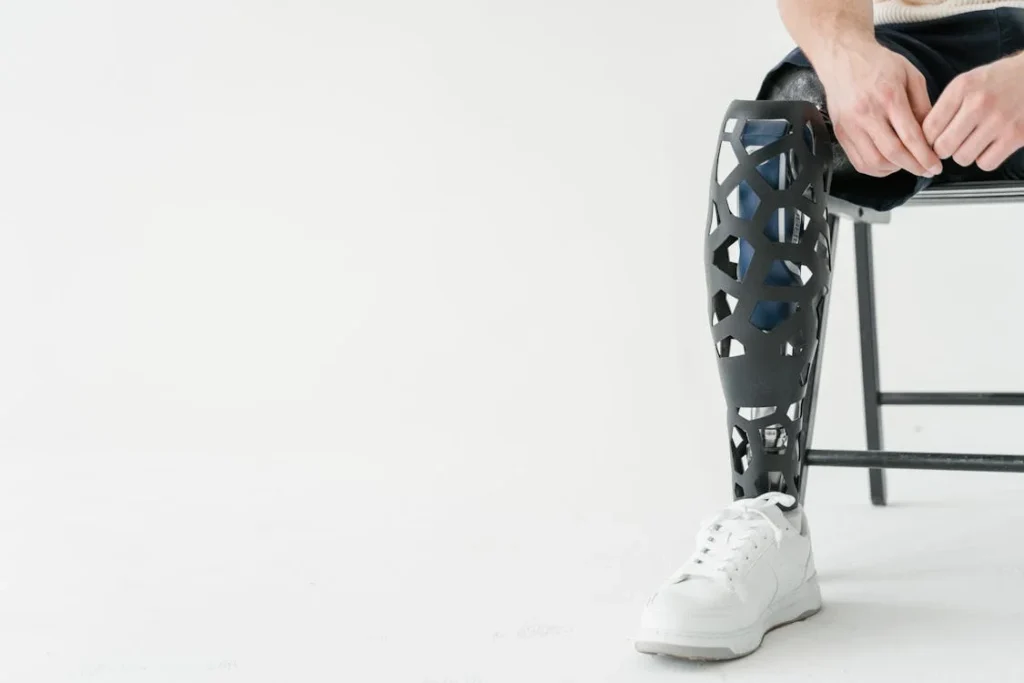
What Is Early Fit Prosthetics and How Does It Work?
Understanding Early Intervention in Prosthetics
Early fit prosthetics refer to fitting a person with a temporary or permanent artificial limb within the first few days or weeks after amputation. This approach is based on the belief that the body and mind recover better when you act quickly.
As soon as the surgical site begins to heal, a team of specialists—surgeons, physiotherapists, and prosthetists—work together to begin fitting the limb.
Most early fittings are with a temporary prosthesis, often called an “immediate post-operative prosthesis” (IPOP). These are lightweight and built to support early standing and gentle walking. They help keep muscles engaged and prevent the body from falling out of alignment.
One of the main benefits of early fitting is how it keeps people moving. It helps them feel like they are getting back to normal faster. Even if the prosthesis needs to be changed later, just having something in place can make a big emotional difference.
The process usually goes like this: After surgery, once swelling is under control and wounds have started to heal, the prosthetist measures the residual limb and creates a socket.
This socket is the part that holds the prosthesis in place. The prosthesis may be adjusted several times as the limb changes in shape over the next few months.
During this time, the person also begins therapy. This includes learning how to use the new limb and building strength. It’s a team effort involving regular checkups, physical training, and emotional support.
The early fitting approach focuses on creating a sense of progress from the beginning. It says: “You are not broken—you’re just adapting.”
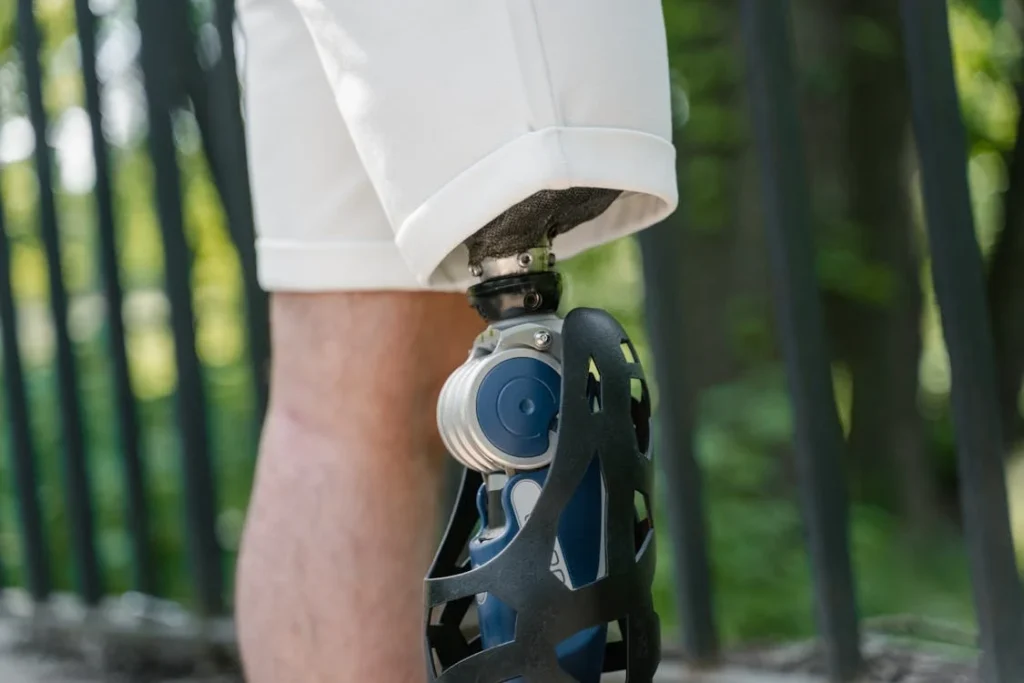
Delayed Fit Prosthetics: A Closer Look at the Conventional Path
What Happens When You Wait?
In delayed fit prosthetics, the person waits several weeks or even months before receiving a prosthesis. This approach is usually recommended if the wound healing is slow, if there are other health complications, or if the patient needs more time to adjust emotionally.
The idea is that it’s better to wait until the body is fully stable. This can help reduce the risk of complications, especially if swelling is still significant or the residual limb is not yet shaped for a comfortable fit.
During the waiting period, patients may use wheelchairs or crutches to get around. They may also use compression garments or limb shrinkers to help shape the limb and reduce swelling.
But there is no artificial limb in place, which means they are not walking or standing on two legs just yet.
This path gives the body time, but it can also lead to some challenges. The muscles in the leg or arm may begin to weaken from lack of use.
The person may lose confidence in their ability to walk again. Sometimes they may even grow used to a life without the limb, which can make the later transition to a prosthesis harder.
That said, delayed fitting does have some advantages. The main one is that by waiting for the limb to fully heal and stabilize, the prosthetist can create a better-fitting and more lasting prosthesis.
There’s often less need for major adjustments later on. This can save time and effort in the long run.
Delayed fit also allows for more planning. The person has more time to choose the right type of prosthesis, explore options, and mentally prepare. For people who are already dealing with complex trauma or long hospital stays, that extra time can feel like a relief.
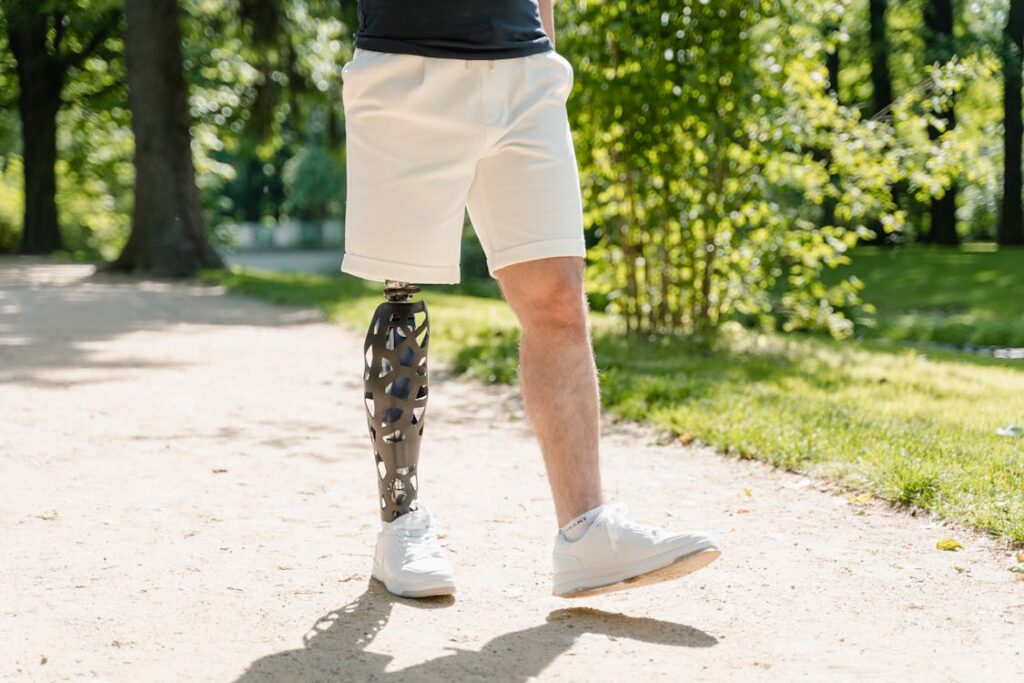
Physical Recovery: How Timing Shapes the Body’s Healing Process
Moving Sooner Leads to Stronger Muscles
The body is made to move. When someone begins walking soon after surgery using an early-fit prosthesis, they keep their muscles strong. The muscles in the hips, thighs, and core all stay active. This helps with balance and posture later on.
In contrast, when fitting is delayed, people often spend weeks or months in bed or using wheelchairs. This can cause muscle shrinkage and stiffness in the joints. Getting back on your feet becomes more difficult the longer you wait.
Another key point is bone density. Standing and walking put pressure on your bones, which keeps them healthy. Without that pressure, bones begin to lose strength. Early movement through prosthetics helps reduce that risk.
Early fitting also supports better limb shaping. As people use their prosthesis, the residual limb naturally adjusts in size and shape. This can lead to a smoother, more comfortable long-term fit. When fitting is delayed, this process still happens, but more slowly and often less effectively.
For those with below-the-knee amputations, starting to bear weight early helps preserve knee function. For above-the-knee amputations, early walking training can reduce the chance of developing bad habits or muscle imbalances.
It’s important to mention that not everyone can go the early fit route. For some, delayed fit is the only safe option. But when possible, early fitting often leads to a more active, capable, and independent body.
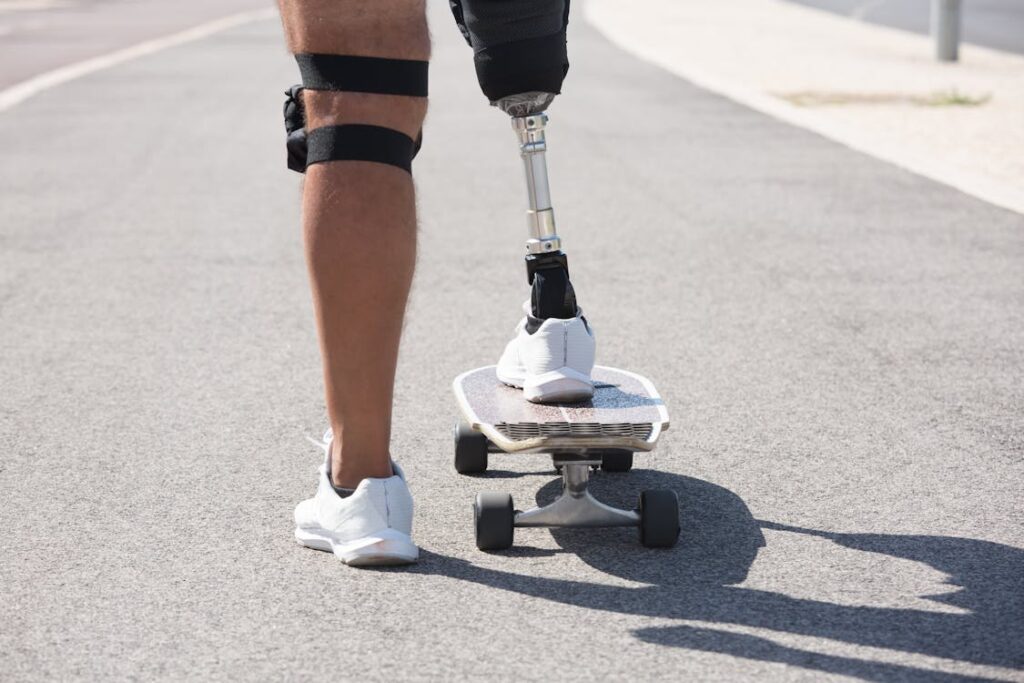
Mental and Emotional Outcomes: The Role of Psychology in Timing
The Mind Follows the Body’s Lead
Losing a limb is not just a physical event—it’s deeply emotional. It can shake someone’s sense of identity and confidence. How quickly a person returns to feeling “whole” often depends on how soon they can start moving again.
Early fit prosthetics give people a strong emotional boost. Seeing themselves standing or walking, even if it’s just a few steps, changes how they feel about their future. It replaces fear with hope. It shows them what’s possible.
This early success helps lower the risk of depression and anxiety. It creates a sense of progress. Each step feels like a small win. And that keeps people motivated to keep going.
In delayed fit, those emotional wins take longer. People may feel stuck in a holding pattern. They see others walking and moving, but they are still waiting. That waiting can be frustrating, especially when the goal feels far away.
The longer someone waits to use a prosthesis, the harder it can be to trust it. Some even decide they don’t want one at all. They grow used to life without it. Relearning to walk becomes not just a physical task but a mental battle.
Therapists and counselors often recommend early fitting for these emotional reasons. It gives patients a tool—not just for walking, but for coping. It reminds them that they are still capable and strong.
That said, the emotional path is different for everyone. Some people need more time to grieve. They may not feel ready for a prosthesis right away. And that’s okay. But when they are ready, knowing the benefits of early use can help guide their choice.

Cost, Time, and Practical Matters: What You Should Know
Financial and Time Investment Impacts
Many people wonder whether early or delayed fit is more affordable. The answer depends on a few things, but overall, early fitting can be more cost-effective in the long run.
Here’s why: Early fit means less muscle loss, faster recovery, and fewer therapy sessions over time. People can get back to work, daily routines, or school faster. That reduces the indirect costs of being inactive.
There is also less need for extensive rehab. While both paths require therapy, early users tend to regain function faster. This shortens the time they need help, saving money on home care or support services.
The cost of the prosthetic itself is usually about the same. Whether you fit early or late, you’ll go through multiple sockets and adjustments over time. That’s normal. But people who wait often need more serious modifications, especially if the limb shape changes dramatically or the muscles weaken.
Also, insurance companies may prefer early fitting because it leads to better long-term results. It’s worth checking what your provider covers, as this can make a big difference.
When it comes to time, early fitting clearly wins. Recovery starts sooner, which means full independence returns faster. For someone trying to rebuild their life, that time is precious. It could mean going back to work months earlier or avoiding extended disability leave.
On the other hand, delayed fit sometimes saves time upfront—fewer appointments in the beginning, fewer early-stage fittings. But over time, delayed users often find themselves in more clinics, needing more therapy, and spending more time catching up.
In terms of practical daily life, early fitting also helps with habits. People learn how to walk, climb stairs, and carry things with their prosthesis as part of their recovery. It becomes second nature. For delayed users, relearning can feel awkward and even scary.
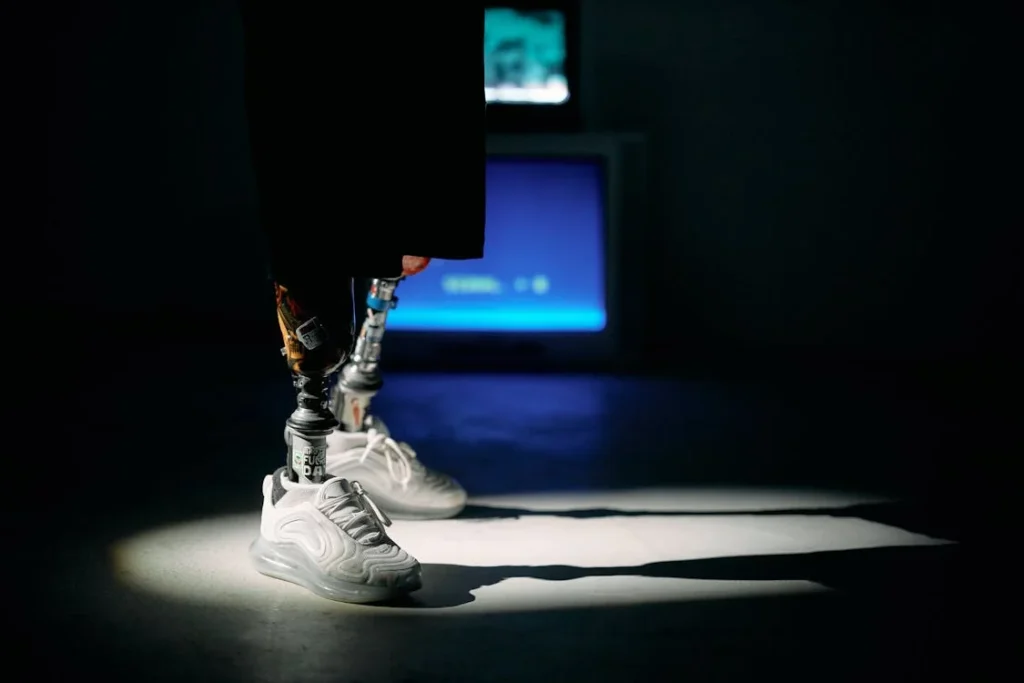
Prosthetic Fitting and Limb Shaping: The Hidden Dynamics Most People Don’t Know
Why Limb Shaping Matters More Than You Think
Most people don’t realize that the shape of the limb left behind after an amputation—often called the residual limb—plays a major role in how well a prosthetic fits and functions.
And that shape doesn’t remain the same after surgery. It’s constantly changing during the first few weeks and months, which is why the timing of the first prosthetic fitting matters so much.
In early fit prosthetics, this limb shaping begins in a natural and active way. When a temporary prosthetic is used, even lightly, the limb is under mild compression, which helps control swelling and guides the tissues into a more uniform shape.
This shaping leads to better comfort, fewer pressure points, and easier adjustments when switching to the final socket later on.
Without a prosthesis in place—as is the case with delayed fitting—the limb still changes shape, but often irregularly. The swelling might go down unevenly, and the soft tissue may settle in a way that makes fitting later more difficult.
In such cases, patients might need extra time wearing shrinkers or compression socks to prepare the limb for a socket. Even then, it can take multiple fittings and reshaping sessions to get it right.
This may not sound like a big deal, but it makes all the difference when someone starts using their permanent prosthetic. A poor fit doesn’t just mean discomfort. It leads to skin breakdown, blisters, pain, and more visits to the clinic.
That can seriously delay rehabilitation and reduce a person’s willingness to wear their prosthesis daily.
There’s another factor: bone prominence. In the early days after surgery, the bone at the end of the limb can be either sharp or rounded. As the muscles shrink and the skin tightens, this prominence can become more or less visible.
Using a prosthesis early on applies pressure in a way that often smooths out these edges over time, making the socket fit more balanced.
So, while limb shaping may sound like a behind-the-scenes issue, it’s a huge part of prosthetic success—and it’s shaped heavily by how early (or late) the fitting is done.
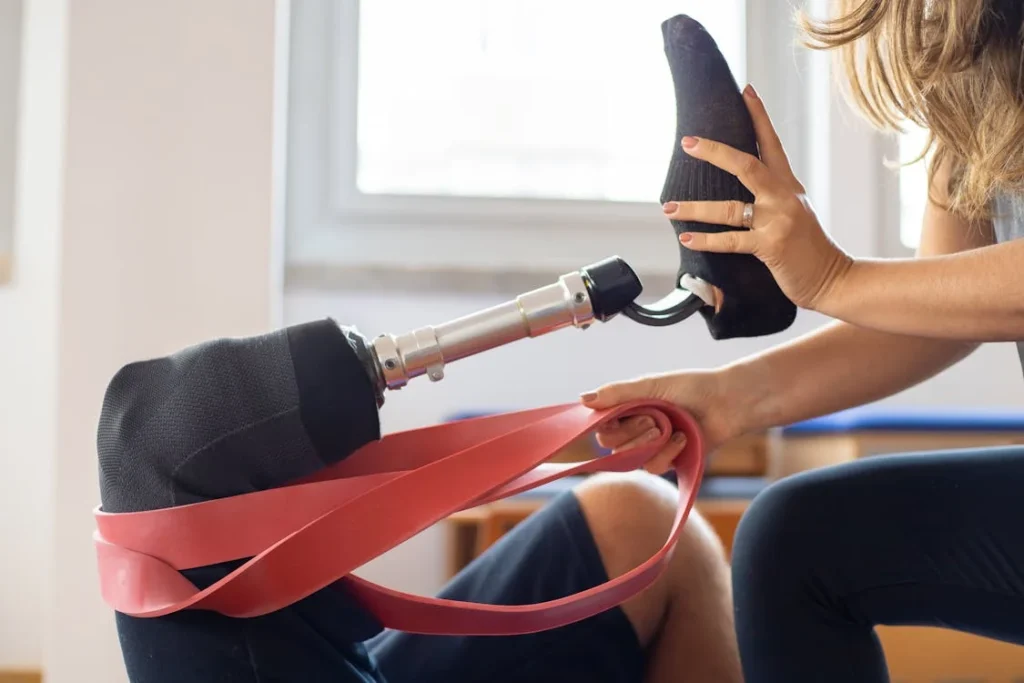
Skin Health, Inflammation, and Comfort: The Biological Side of Timing
The Skin’s Role in Adaptation
Skin is often overlooked in discussions about prosthetics, but it plays a vital role. It’s the first line of contact between the body and the artificial limb. Whether you’re talking about early or delayed fitting, the skin has to adapt to pressure, movement, and friction.
With early fit prosthetics, the skin begins this adaptation gently and gradually. At first, the pressure is mild. Over time, the skin becomes stronger, more elastic, and better able to handle weight and motion.
The body basically learns to tolerate the prosthetic environment through exposure.
Delayed fit, however, means the skin isn’t exposed to any such pressure for a long time. When a prosthetic is finally introduced, it’s a bigger shock to the system.
The skin might blister, become red, or even tear because it hasn’t been gradually conditioned. Some users describe this as one of the most painful parts of late prosthetic use.
There’s also the question of inflammation. After surgery, the body is in a natural state of inflammation. In early fit scenarios, introducing the prosthetic gradually can help regulate this process.
But if a person stays inactive for too long, inflammation can linger in pockets, causing discomfort or delayed healing.
Also worth mentioning: sweat. Yes, sweating may sound minor, but it’s a big deal for amputees. Skin trapped inside a socket sweats differently.
If the body has time to get used to that early on, it’s less likely to develop rashes, fungal infections, or discomfort later. Delayed users sometimes struggle with this new experience and require frequent liner changes or antibacterial treatments to adjust.
In short, the earlier the skin begins adapting to this new environment, the fewer problems users typically face down the line.
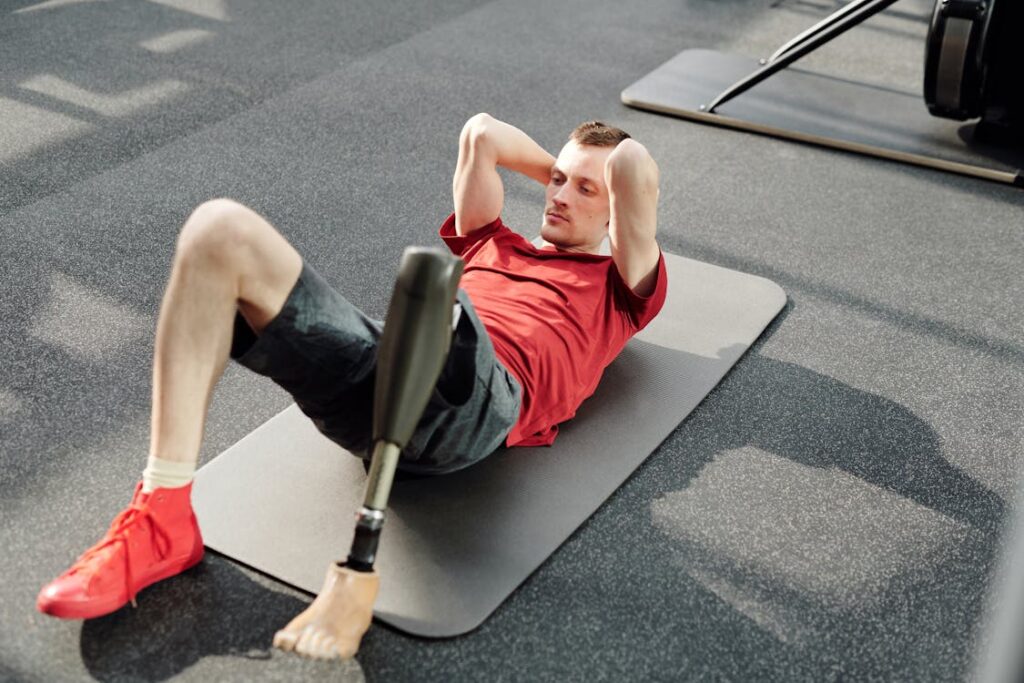
Prosthetist Involvement and Technology Matching: Building the Right Support Team
Not Just About the Limb—It’s About the People and Tools
When someone begins prosthetic use early, their connection with the prosthetist becomes stronger from the start. They build a relationship that’s built on trust, feedback, and regular communication.
This close partnership allows the prosthetist to fine-tune the prosthesis based on real-time experience—not just assumptions.
In delayed fit cases, that relationship starts later. Sometimes patients don’t even meet their prosthetist until long after healing. That can slow down the customization process and create a distance that affects outcomes.
The person might feel less comfortable giving feedback, or they may try to “tough it out” instead of asking for changes.
This timing also affects technology matching. With early fitting, the prosthetist can assess how someone moves and what kind of prosthetic systems will work best for them.
For example, should the person use a microprocessor knee? Would a suction socket provide better suspension? These insights come from watching someone move, not just talking about it.
In contrast, delayed fitting relies more on static data—residual limb shape, height, weight, and medical history. While these are useful, they don’t give a full picture of how a person walks or balances in real life.
As a result, they might get a more basic system, at least initially, and only upgrade later.
Another thing to consider: when early fitting is done in a hospital or rehab setting, the whole team is involved—surgeons, physiotherapists, occupational therapists, and prosthetists. It’s a well-orchestrated effort that makes the transition smoother.
In delayed cases, the coordination may not be as tight. The team might be fragmented. A general physician may handle follow-up care, while the prosthetist is consulted only when it’s time to build the limb.
This disconnected process often leads to missed opportunities for better outcomes.
When prosthetic care is seen as a team sport, patients win. And early fitting tends to bring the team together sooner.
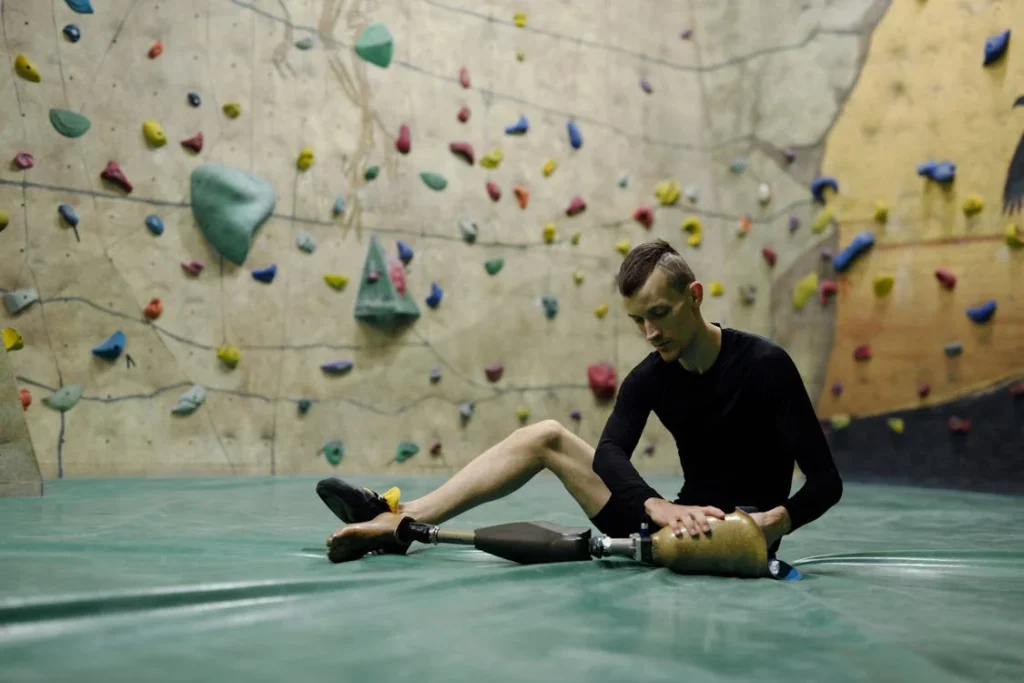
Real-World Mobility: How Timing Impacts Balance, Safety, and Confidence
What It Means to Move Through the World
Walking isn’t just putting one foot in front of the other. It’s a complex blend of balance, rhythm, posture, and confidence. And how early you start walking with a prosthetic affects how well you do it long-term.
In early fit cases, people start learning right away. They use parallel bars at first, then walkers, then canes, and finally unaided walking. This builds muscle memory. They learn how to shift weight, how to balance on uneven surfaces, and how to react quickly if they start to fall.
All this becomes second nature over time. It’s like learning a new dance—you do it slowly, awkwardly at first, but the sooner you start, the more natural it becomes.
Delayed users don’t get that early practice. When they finally do start walking, it feels more like relearning from scratch. Their balance is off. Their reaction times are slower. They may walk with a limp or rely on walking aids longer. Even crossing a street can feel like a challenge.
There’s also a huge confidence gap. Early-fit users tend to trust their limbs more. They’ve seen that their prosthesis can support them. They’ve had minor stumbles, but they’ve recovered. That experience teaches resilience.
Delayed users often fear falling. And when you’re afraid to fall, you change how you walk. You take shorter steps, look down all the time, and tighten your muscles—ironically increasing your risk of tripping. Confidence and safety go hand in hand, and confidence is much easier to build when you start early.
Plus, mobility isn’t just about walking. It’s about climbing stairs, getting in and out of cars, standing in line at the grocery store, and taking your dog for a walk. The more life you can live early, the more adaptable your body becomes to every new task.

Social Reintegration and Life Activities: Stepping Back into the World
Beyond Recovery—Reclaiming Everyday Life
The ultimate goal of any prosthetic journey isn’t just recovery—it’s reintegration. People want to go back to work, go out with friends, travel, play sports, and feel like themselves again. The timing of prosthetic fitting can influence how quickly and fully this return happens.
Early fitting allows people to engage socially while they’re still adjusting. They’re not isolated for months. They go to therapy sessions, meet others going through the same experience, and even share meals or stories in the clinic. These small social interactions build a bridge back to normal life.
When the fitting is delayed, people often retreat into their homes. They wait until they’re “ready.” But readiness is a moving target. The longer they wait, the more uncomfortable they feel in public spaces. Things that were once normal—catching a train, visiting a restaurant—now seem intimidating.
This isolation can become a cycle. Less exposure leads to more fear, and more fear leads to even less exposure. Early fit helps break that cycle by making social activity part of the healing journey, not a reward at the end.
It’s the same with work. Returning to a job after amputation is tough. But it’s easier when you’ve had months of walking and moving experience under your belt. Early users often rejoin the workforce sooner, even if just part-time. That brings financial relief and a sense of purpose.
And we can’t forget hobbies. Whether it’s dancing, swimming, cycling, or playing music, early fit users have a better chance of picking up where they left off. They get to redefine their limits quickly and learn how to adapt. Life becomes possible again—not in theory, but in practice.
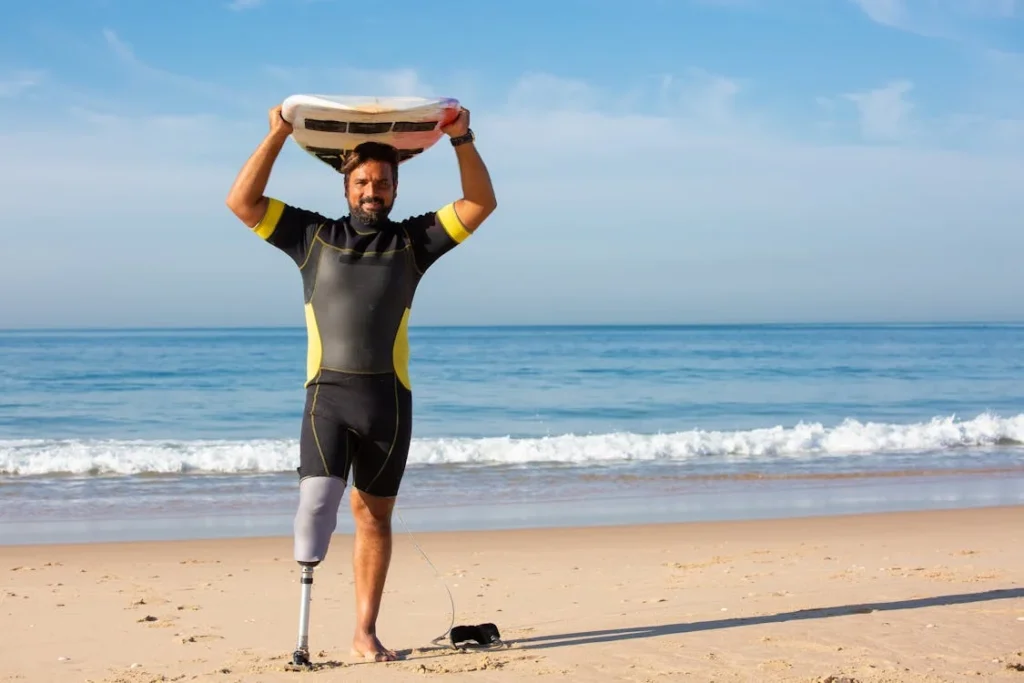
Technology Integration and Upgrades: Building a Future-Proof Prosthetic Experience
Evolving With the Tools
Today’s prosthetics are not static. They’re evolving machines—some with sensors, microprocessors, AI-driven movement, and even app integrations. The earlier someone starts using one, the more time they have to grow with the technology.
Early fit users often begin with simple systems, but over time, they get to try out advanced features—like variable resistance knees, real-time feedback, or energy-storing feet. Because they’re already comfortable with prosthetic movement, learning how to use these tools feels natural.
They also give better feedback to manufacturers and developers. Their experience helps shape the next generation of devices. Some even join user panels or clinical trials, testing out bleeding-edge features.
Delayed users sometimes struggle with this. They are introduced to technology when they’re still learning basic movement. That’s a lot to take in. Many stick to simpler, mechanical devices, not because those are better, but because they feel easier to manage during the initial learning curve.
This gap means delayed users may miss out on features that could truly enhance their lives. Or, they may adopt them later but with more difficulty.
Another benefit of early fit is tech familiarity. Users get used to checking fit via an app, charging components, or syncing devices. It becomes part of daily life, like charging your phone. For delayed users, it can feel like a burden rather than a tool.
So, while both early and delayed paths can lead to tech adoption, early users tend to have a more seamless, confident journey.
Conclusion
There is no one-size-fits-all answer. Some people benefit hugely from early fit prosthetics. Others need the time and safety of a delayed approach. The key is working closely with your care team to make the right choice based on your health, goals, and support system.
Still, if you’re medically stable and mentally ready, early fitting offers powerful advantages. It supports faster healing, boosts confidence, and speeds up return to daily life. It brings action when people need hope the most.
For those who must delay, all is not lost. With strong rehab, emotional support, and the right prosthetist, even a late start can lead to great results.
The decision comes down to readiness, resources, and respect for the body’s needs. But now, you’re armed with the knowledge to ask the right questions, understand your options, and plan the path that fits your life best.



